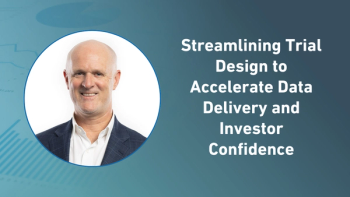
Brain Monitoring Devices in Clinical Trials
In July last year, I wrote about the
These sorts of approaches certainly open the door to large scale cognitive function testing in clinical trials, where traditionally only laboratory-based testing in smaller groups of patients has been practical. This is already happening, Pfizer and Shire for example are using the
While related to brain training and cognitive function testing, the focus of this article is on the application of a new set of devices which are becoming available to consumers to directly measure brain activity.
The boom in wearable devices has been facilitated by technological advances enabling the miniaturization of sensors and circuitry. Processors and sensors have become smaller, faster and smarter which has enabled huge growth in the production of affordable consumer devices aimed at the health and wellness market. The take up of activity monitoring using miniature accelerometers is a great example of this boom, and one I focused on in my previous article.1 An interesting aspect of the use of devices such as activity monitors is the recording of continuous monitoring data, and the associated complexity this brings in terms of the receipt, cleaning, interpretation and summary of the data. Unlike a glucose meter or spirometer, which provide simple point data, continuous monitoring falls into the class of complex wearables due to the additional rigour needed in managing and interpreting the data recorded.
Wearable Brain Monitors
Consumer products that measure brain activity are essentially devices worn around the head to measure EEG signals. Firmware within the device interprets the signals from a series of dry electrodes contained within a headset to provide continuous EEG signal traces. In health and wellness, mobile EEG monitoring has two main areas of developing application. The first application area uses measured brain activity output to control a product to produce a physical action or enable communication. A compelling example of this is the use of live brain monitoring to enable paraplegic patients to communicate via a computer interface. Similar to the approach used by Stephen Hawkings, where his cheek movements are used to select letters and words to enable synthesised speech, portable EEG headsets have been used to enable paraplegic patients to select letters displayed on screen and construct words and sentences to enable interactive communication. In this case, letter selection is controlled by EEG signals detected from the patient’s brain as they focus on mentally selecting a specific letter from a visually presented list. This example has been realised using a device and software called “Mind Speller” that was developed by researchers at The Catholic University of Leuven together with those at IMEC in Belgium.3
A second application area, and one that is seeing growing interest in the consumer product industry, is the EEG measurement of brain activity to provide feedback helpful to the subject in the pursuit of brain health or the combat of certain states or emotions. This is called neurofeedback. During neurofeedback, EEG signals received in real time are presented visually to the patient in a simple and easy to understand graphical manner. When training for attention, a graphical display of EEG output might, in its most basic form, summarise EEG activity into two bar charts, one reporting slow and inefficient brain wave activity and the second illustrating efficient active thinking (Beta brain wave activity). While we normally have no awareness of our brain wave activity, the immediacy of this feedback provides this insight and enables the subject, over time, to learn how to modify brain wave patterns and consciously adjust the pattern of activity displayed on the screen, and ultimately continue to do this for periods when the device is not worn. This kind of application is commercially available to consumers and aimed at areas of brain wave training such as reduction of stress and anxiety and improving focus and concentration.
There are a number of good examples of devices and their associated smartphone and PC applications available to consumers. One such example is
seven sensors positioned across the forehead and behind the ears. MUSE measures and reports the balance of EEG frequency bands detected during brain activity. It’s known that different brain wave frequencies reflect different states of brain activity. For example, Alpha waves are strongest during relaxation, especially when the eyes are closed; Delta waves are observed most prevalently during periods of sleep; Theta waves are also associated with sleep, very deep relaxation and visualization; and Beta waves occur most when a subject is actively thinking or problem-solving. Using custom algorithms developed by InteraXon, the MUSE headband can be used in combination with their “Calm” app on the subject’s smartphone. This app uses real-time brain wave output, and specifically changes in the balance between Alpha, Beta, Delta and Theta frequencies, to detect when a user’s mind is calm and focused and when it’s wandering. Through exercises and immediate feedback it is possible for users to identify distractions and train themselves to recognise and modify brain activity to become more focussed or less stressed. There are many other similarly interesting consumer devices available-see for example
Neurofeedback application areas
In addition to enabling healthy subjects to attain peak performance in terms of focus, attention and relaxation, and in promoting healthy aging via meditation, mindfulness, and cognitive training, different types of neurofeedback have been shown to have value in different disease indications and conditions. For example, neurofeedback on Sensorimotor Rhythm (SMR, an oscillatory type of low Beta activity) has been shown to reduce motor seizure rates in epileptic patients while also improving sleep patterns.4 Neurofeedback may also be efficacious in the treatment of ADHD5 and Anxiety,6 and early case studies indicate its possible value in depression.6
Home EEG Monitoring in Clinical Trials
The fact we can now measure EEG for continuous periods of time using affordable wearable devices outside the clinic environment opens the door to leveraging this data in clinical drug development to provide more understanding of treatment effects in certain disease indications. There remains a need to understand the accuracy and reliability of data collected using these devices. For example, when devices measuring EEG signals solely from the frontal cortex using forehead sensors are used, the amplitude of EEG signals measured is different to those measured centrally. Good validation studies will be required to ensure that the interpretation of the signals received correlates well with those from conventional EEG. In addition, it will be important to understand how the device firmware operates, for example in cleaning the trace of data artefacts. Despite this, the potential for large scale use in a cost-effective manner is evident.
It is interesting to consider the areas where home measurement of EEG data may be of value, either at defined times or, more likely, for continuous periods to learn more and provide objective measures about the condition studied. Two immediate areas are apparent: epilepsy management and sleep assessment.
Epilepsy
Mobile EEG enables long-term monitoring in an outpatient or home environment. Like Holter monitoring for ECG abnormalities, this may have particular application in therapy areas such as epilepsy where seizure incidence is unpredictable and needs to be recorded outside the clinic environment. Continuous EEG data may be valuable in the detection and characterisation of seizures and in identifying the effect of treatment on seizure incidence and severity. For example, continuous EEG monitoring may help recognise the incidence of subtle seizures that go unrecognised by the patient, or characterising the presence or absence of a seizure when the patient presents with seizure-like symptoms. Long term ambulatory EEG has already shown an important role in the assessment of patients who present diagnostic or management difficulties following clinical evaluation of routine EEG. Applications include: differentiating between nocturnal epilepsy and other sleep disorders (parasomnias) such as abnormal movements during sleep; characterisation of seizure type; and accurate quantification of seizure frequency.7 Long term monitoring produces a large quantity of data which needs to be reduced for analysis. Commercial algorithms can be used to identify spikes and seizures and identify data artefacts caused by electrode interference for example. However, it is likely that in clinical trials this will be augmented by professional trace reading to ensure algorithm accuracy and adjudicate events that cannot be distinguished definitively by automated algorithms.
Sleep
In addition to insomnia, understanding sleep quality and efficiency is a valuable endpoint for the treatment of many disease indications including depression, anxiety, COPD, sleep apnoea, asthma, pain and other conditions. While patient self-report through sleep diaries has been successfully used in regulatory submissions as a primary endpoint in insomnia studies (for example, eszopiclone8), other approaches to collection of objective data to supplement patient diary records is valuable. Such approaches need to be convenient for the patient and not cost-prohibitive for the sponsor, which is where the rise in affordable wearables becomes interesting. Activity monitors have been used to identify sleep onset and awakening, and when worn on the wrist overnight provide a convenient and unobtrusive approach for patients. However, actigraphy has a weak correlation with sleep onset and awakening, and in general when compared to polysomnography data activity data tends to over-estimate sleeping time.9 Limited activity does not always correspond to a state of sleep. Activity data also has poor ability to detect night-time awakenings,10 and is unable to reliably detect more complex information such as sleep stages. Other methodologies such as finger worn monitors that measure Peripheral Arterial Tone (PAT) have been shown to be useful in detecting sleeping and waking episodes and identifying sleep disturbances such as obstructive sleep apnoea. Identification of sleep stages such as REM and Slow Wave Sleep (SWS) using PAT may be more difficult, and where this is needed to provide important insights an EEG signal is optimal. This ability to make objective measurement of sleep outside the sleep laboratory setting may be a valuable addition to a drug development program. In addition, the use of continuous EEG may be valuable in measurement and characterisation of daytime napping behaviour in conditions such as narcolepsy. As with the epilepsy example, commercial software can be used to identify sleep stages and provide summary statistics for sleep quality and quantity, but for clinical drug submissions this will likely require expert oversight to ensure the accuracy of autoscoring algorithms and provide manual scoring for ambiguous trace elements.
Other areas
The application of home EEG monitoring in other areas may be less well understood at this time. However, there is a need for objective assessments in addition to physician and patient subjective measures in some conditions, such as depression and anxiety. As the availability of wearable brain monitors increases, and the cost of devices continues to drop, we can expect further research to identify sensitive objective clinical outcomes assessment measures using mobile EEG data.
Conclusion
The growth in wearable technology applied to the personal health and wellness market is facilitating the measurement of complex clinical endpoints that previously have only been possible at clinic. The sophistication and price-acceptability of home EEG monitoring devices is increasing and providing a real opportunity for their large scale use by consumers and in clinical research. As usage grows, so does the depth of brain profile data collected across the population of healthy individuals and across a range of disease states. Like cognitive function test batteries, this accumulating wealth of population data provides a powerful knowledge bank of normative data that can help to provide reference data, provide meaningful context of treatment-related effects, and improve early diagnosis of certain disorders. Very soon, brain profiles of health and illness will be much better understood through large-scale cloud databases of EEG, and individuals will benefit from improved diagnostic criteria and treatment protocols.
Collecting EEG data using portable headbands makes the home monitoring of brain activity a real possibility in large scale clinical trials. This may have immediate application in the study of epilepsy and the measurement of sleep quality and staging in a variety of therapeutic areas. As brain profiles for different disease states are better known and characterised, mobile EEG data may enable the identification of additional objective measurements that can importantly assist in the objective assessment of new drugs for depression, anxiety and other CNS disorders.
All images of the MUSE headband. Reproduced with permission of InteraXon Inc, Toronto, Canada
References
- Byrom B. (2014). Wearables in Clinical Trials: An Active Interest? Applied Clinical Trials Online.
http://www.appliedclinicaltrialsonline.com/node/245084
- Kesler S. et al. (2013). Cognitive Training for Improving Executive Function in Chemotherapy-Treated Breast Cancer Survivors. Clinical Breast Cancer; 13:299-306.
- Katholic University of Leuven. (2010). Campus Insight Magazine, May 2010.
www.kuleuven.be/ci/28/28.pdf
- Sterman MB. (2000). Basic Concepts and Clinical Findings in the Treatment of Seizure Disorders with EEG Operant Conditioning. Clinical Electroencephalography; 31:35–45.
- Lofthouse N. et al. (2012). A Review of Neurofeedback Treatment for Pediatric ADHD. J. Attention Disorders; 16:351–372.
- Hammond DC. (2005). Neurofeedback with Anxiety and Affective Disorders. Child Adolesc. Psychiatric Clin. N. Am.; 14:105-123.
- Smith SMJ. (2005). EEG in the Diagnosis, Classification and Management of Patients with Epilepsy. J. Neurol. Neurosurg.Psychiatry; 76:ii2-ii7
- Krystal AD. et al. (2003). Sustained Efficacy of Eszopiclone Over 6 Months of Nightly Treatment: Results of a Randomized, Double-Blind, Placebo-Controlled Study in Adults With Chronic Insomnia. Sleep; 26:793-799.
- Ancoli-Israel S. (2003). The Role of Actigraphy in the Study of Sleep and Circadian Rhythms. American Academy of Sleep Medicine Review Paper. Sleep;26:342-92.
- Paquet J. et al. (2007). Wake Detection Capacity of Actigraphy During Sleep. Sleep; 30:1362-1369.
Newsletter
Stay current in clinical research with Applied Clinical Trials, providing expert insights, regulatory updates, and practical strategies for successful clinical trial design and execution.






.png)



.png)



.png)
.png)
